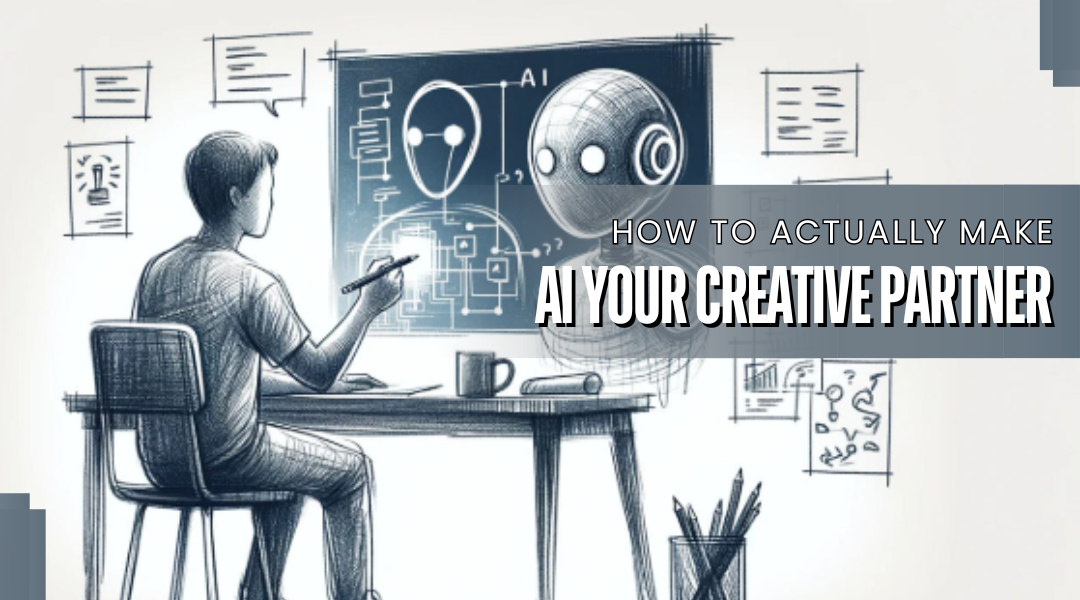Most “AI collaboration” guides read like sterile corporate manuals. But after helping dozens of artists, writers, and entrepreneurs integrate AI into their creative process, I’ve learned the messy truth: the best human-AI partnerships feel more like jazz improvisation than following a recipe.
Step 1: Pick Your Creative Battle
Forget vague prompts like “help me write.” Choose something that:
- You care about (your zombie romance novel beats another generic blog post)
- Has constraints (“adapt my grandma’s cookie recipe to be vegan” works better than “make dessert”)
- Benefits from rapid iteration (AI shines at generating options fast)
Real example: Sarah, a jewelry designer, used AI to generate 20 tagline options for her new collection in minutes. “It gave me terrible corporate jargon at first,” she admits, “but then I said ‘make it sound like a Brooklyn poet wrote it’ and suddenly we got somewhere.”
Step 2: Establish Who Does What
Here’s the hidden truth AI companies won’t tell you: AI is a terrible boss but a decent intern. The hierarchy matters.
For a travel itinerary project:
| Task | Human Job | AI’s Role |
| Core Experience | Pick meaningful activities | Suggest nearby alternatives |
| Logistics | Final call on timing | Calculate transit times between spots |
| Surprise Element | Add personal Easter eggs | Generate quirky local trivia |
Pro Tip: Tell your AI tool its role explicitly: “You’re my over-caffeinated research assistant with a PhD in obscure facts – I’ll make final decisions.”
Step 3: Start Ugly
The magic happens in revision. Graphic designer Mark shares his process:
- Dump AI-generated color palettes into a doc
- Physically circle fragments he likes with his tablet
- Tell the AI: “Combine #3’s vibrancy with #7’s earth tones”
- Repeat until his gut says “yes”
“The first output is always garbage,” he laughs. “But it’s faster to edit bad ideas than stare at a blank screen.”
Step 4: Embrace Creative Friction
When novelist Priya hit writer’s block, she did something radical: she asked ChatGPT to write the worst possible version of her scene. “Reading something truly awful ironically unblocked me – I kept thinking ‘no, it should be like THIS’ and suddenly words flowed.”
This is where AI collaboration shines – not as a solution machine, but as a provocateur.
Step 5: Kill Your Darlings (Together)
The final test? Walk away for 24 hours, then review with fresh eyes:
- What clearly came from the AI? Delete it.
- What makes you proud? Amplify it.
- Where did the combo spark something new? That’s gold.
Case Study: A musician friend used AI to generate 50 melody variations overnight. At 3AM, bleary-eyed, he found one fragment that made his spine tingle – that became the chorus of his new single.
Why This Works
The best creative partnerships:
- Leverage asymmetry (AI’s speed + your taste)
- Thrive on constraints (narrow briefs beat vague ones)
- Require editing (not delegation)
As filmmaker Ava puts it: “I don’t want AI to write my scripts – I want it to be the annoying film school buddy who won’t stop pitching crazy ideas until I yell ‘that’s the one!'”
Final Thought: The future belongs not to those who fear AI or worship it blindly, but to creatives who learn to argue with it productively. Now go make something only you-and-your-new-robot-sidekick could create.
